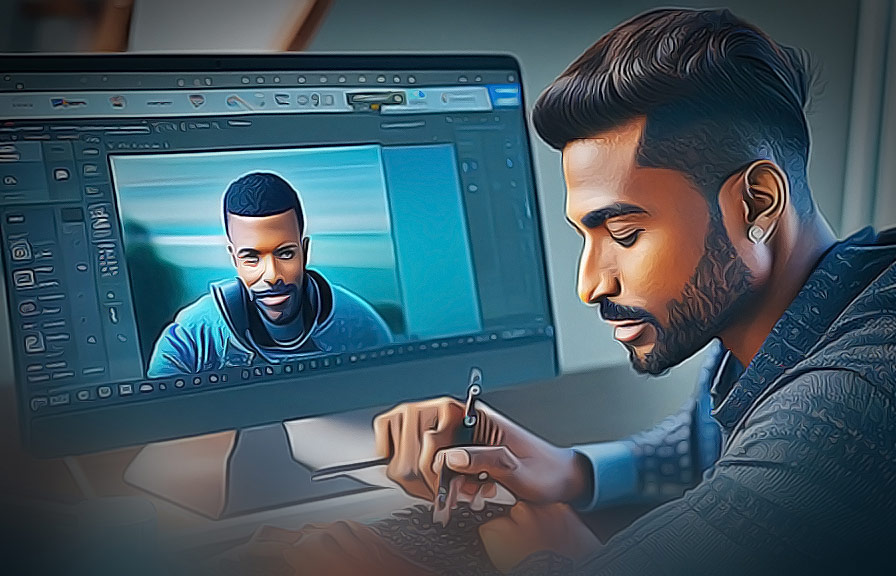Did you know that an average person takes around 25,000 photos in their lifetime? with the increasing use of smartphones and digital cameras, we all have become photographers in our own right. but not all photos turn out perfect.
In fact, many of them need some fixing and repairing to look their best. in this post, we will explore the concepts of image fixing and repairing, and share some tips on how to fix common photo problems.

A little-known fact about the first digital image
Before diving into the subject of photo repair, let's take a moment to appreciate a fun fact about digital images. the first digital image was created in 1957 by a scientist named russell kirsch. surprisingly, it was a black-and-white image of his three-month-old son, and it had a resolution of
Only 176x176 pixels! fast forward to today, and we are capturing images with resolutions as high as 108 megapixels.
Understanding photo repair and fixing
Photo repair is the process of restoring a damaged or degraded photograph to its original condition, or as close as possible to it. this can involve fixing tears, removing stains, and correcting color issues. on the other hand, fixing a photo involves enhancing the image so that it looks better than the original.
This might include adjusting the brightness, contrast, and saturation, or even removing unwanted objects from the scene.
Repairing image: fixing the damaged
There are several reasons why a photograph might need repairing. some common issues are:
1. physical damage: torn, creased, or stained photos can be digitally repaired by carefully reconstructing the missing or damaged parts of the image.
2. fading: old photos can lose their color and contrast over time. digital restoration can help bring back the original colors and make the image look new Again.
3. water damage: water can cause discoloration and staining in photographs. photo repair techniques can help remove the stains and restore the image to its original state.
Fixing photo: taking it to the next level
Photo fixing goes beyond repairing damaged images. it's about enhancing the overall look of a photograph, regardless of its original condition. some common photo fixing tasks are:
1. color correction: adjusting the color balance, saturation, and contrast can make a photo look more vibrant and visually appealing.
2. noise reduction: digital cameras often introduce noise, especially in low-light situations. noise reduction techniques can help create a cleaner and more professional-looking image.
3. Object removal: unwanted objects or distractions can be removed from a photo to create a more pleasing composition.
How to fix common photo problems
Now that we know what photo repair and fixing entail, let's look at some practical tips on how to fix common photo problems.
Adjust the brightness and contrast
If your photo looks too dark or washed out, adjusting the brightness and contrast can make a significant difference. most photo editing software, including free options like gimp and paid ones like adobe photoshop, have tools for adjusting these settings.
Fix the white balance
Incorrect white balance can result in photos with a color cast, making them look unnatural. you can correct the white balance by using the color balance tool in your preferred photo editing software.
Remove unwanted objects
Sometimes, unwanted objects can spoil an otherwise great photo. using tools like the clone stamp, healing brush, or content-aware fill in photo editing software can help you remove these distractions and create a cleaner composition.
Sharpen the image
If your photo appears slightly blurry,applying a sharpening filter can help. be cautious not to overdo it, as excessive sharpening can introduce artifacts and make the image look unnatural. most photo editing software has built-in sharpening tools that you can use to enhance the image.
Reduce noise
Digital noise can be a common issue in photos, particularly those taken in low-light conditions. noise reduction tools in photo editing software can help you minimize the grainy appearance and create smoother images. keep in mind that aggressive noise reduction can lead to loss of detail, so use it judiciously.
Crop and straighten
Sometimes, all a photo needs is a little cropping and straightening to improve its composition. use the crop tool in your photo editing software to remove unwanted parts of the image and focus on the main subject.
Straightening tools can help you correct any misaligned horizon lines or other tilted elements.
Restore damaged photos
For physical damages, like tears, creases, or stains, use a combination of the clone stamp, healing brush, and patch tools in your photo editing software. these tools allow you to sample unaffected parts of the image and use them to repair the damaged areas.
This process requires patience and attention to detail but can result in impressive photo restorations.
Conclusion
Photo repair and fixing are essential skills for anyone looking to enhance their photography. by understanding the difference between repairing an image and fixing a photo, you can address various photo problems and create visually appealing images that stand the test of time.
With the right tools and some practice, you can turn imperfect photos into stunning masterpieces.
Remember, the key to successful photo repair and fixing lies in striking the right balance between correcting imperfections and preserving the natural look of the image. so, the next time you come across a photo that needs some fixing or repairing, don't hesitate to put your newfound knowledge to the
Test and watch your photography skills soar!
